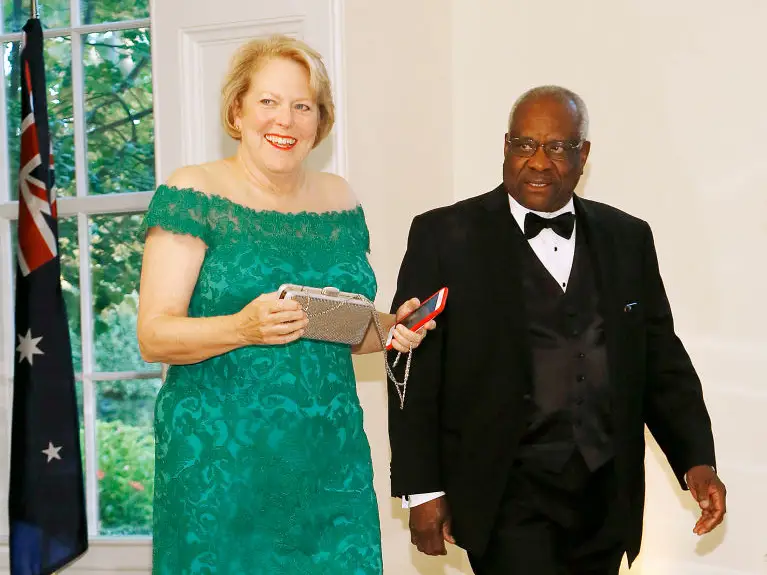By Paddy McEvoy
First allow me to explain my interest in this question. I had been teaching in England, in state schools, for over 20 years, before moving over to Steiner/Waldorf education. It was in the 1980s. The National Curriculum was being drawn up at the time. I was Acting Deputy Head in a multi-ethnic London primary school and had serious reservations about nearly every aspect of the new National Curriculum that was being proposed. I was confronted with the dilemma of how to square in my conscience the selling to parents of a Curriculum I didn’t believe in, if I were to take the next professional step and move up the career ladder to a Headship.
I had read some of Steiner’s writings, and although puzzled by some of the more inaccessible (outlandish?) of the ‘esoteric/spiritual’ theories, I was impressed by the Steiner schools I visited. I decided to attend the two year Waldorf Training Seminar at Steiner House in London, on Saturdays. It was a fascinating course – in some ways it felt like a step backwards, being clearly out of sync with the race and gender debates which were raging in the London Borough of Brent where I taught. In other ways, it felt like a mighty leap forward, so engaging were some elements of the course, and so refreshing was the well-thought-out curriculum which underpinned the Waldorf schools’ programme.
Steiner himself (1861 to 1925), was an Austrian mystic and esotericist, who started out as a Theosophist but broke with them on the question of whether Krishnamurti was the new Maitreya or World Teacher, and founded his own Anthroposophical movement. He started his first school at the Waldorf cigarette factory in Stuttgart in 1919.

Rudolf Steiner
I became increasingly unpopular with some of the more cultic members of the Anthropop movement for vigorously pushing the idea that Steiner education should be state funded, naively believing that Anthroposophy could be somehow detached, certainly played-down, to the point of non-existence, from the educational work of the schools. I was considered an Ahrimanic influence – (Ahriman being a Zoroastrian evil force/demon).
The more I found out about Steiner’s extraordinary writings, the more I felt myself having major reservations about him, and them. But what to do, enmeshed, as I and my family were, in something that would be awkward to extricate myself from? I was teaching History in the Upper School. Steiner had a unique take on the origins of the planet and the evolution of human civilisation, which one was expected to adhere to in one’s teaching – to follow the ‘indications’. One heard a lot about Steiner’s ‘indications’, (as if they were optional). (They were as ‘optional’ as was the doctrine of transubstantiation in Catholic schools, another maze which I had earlier in my life extricated myself from.) Steiner traced the course of the development of modern human civilisation from Ancient India, to Persia/Babylon, to Egypt, to Greece, to Rome and forward to modern Aryan Europe, the pinnacle of human endeavour! Any informed history curriculum should be deeply anchored in the ancient past, but to contextualise the evolution of civilisation as Steiner did sits very uncomfortably with the spirit of free enquiry which should obtain in any school, which above all should be a non-prescriptive place of learning. He had some very uncomfortable things to say about the role of Judaism in history, and about the black races, which no modern Anthropop would be prepared to defend (I hope), among other surreal theories. But Steiner was no friend of the Nazis, nor they of him.
But was Steiner a ‘racist’? We think of ugly hate-crime when we think of racism. I would seriously doubt if he was motivated by any such base inclinations. I feel that the hierarchical way in which he ordered his universes of higher and lower worlds, inevitably and logically involve some ‘beings’ being at the top and some at the bottom, some on the up and some on the slide. And it must be remembered that all this cosmic guesstimation was tied up with notions of karma and reincarnation. The prevailing ideologies of his time, it must be remembered, were not egalitarian.

Waldorf School Ghent, NY
The question of the state recognition and funding of Steiner education has come under the spotlight recently. There are voices being raised challenging such recognition in Britain and Ireland. In Ireland, a Steiner National School in Co Galway has recently received official confirmation amid controversy that certain of Steiner’s attitudes and theories lie uneasily beside modern, more rational/science-based understandings of life.
The bigger and more serious question is: ‘Under which heading should Steiner schools be classified?’ The fact that they are not obviously, visibly denominational should not deter educational authorities from looking more closely at the philosophy which underpins the practice in the schools.
Anthroposophy is not openly ‘taught’, it runs through every aspect of Steiner school life like an X-ray, its influence being omnipresent. Study-groups, a staple of Anthropop life, constantly peruse his writings, both in the schools, and in the wider Steiner community. When I first heard about etheric, astral and other, higher ‘bodies’, and the four temperaments, I looked upon these theories as quaint, even poetic ways of describing the growth of the individual. When I actually had to work with people who seriously believed these things, I became alarmed. That alarm grew when I became aware of what they thought of me for not believing these, to me, absurd, postulations. All had to be taken on trust. Why? Because The Master said it, so it must be right. (Echoes of North Korea…Margaret Thatcher ‘Not one of us’?) We were once discussing the poor literacy of certain children when a teacher ventured the jaw-dropping opinion that we should relax about literacy. Why? Because we were not really educating the person for this incarnation but the next! (Some of these people were of the view that handicapped people, homosexuals, etc., were such because of misdeeds in previous incarnations! Ask those who run Camphill communities.)
So, can Steiner schools be thought-of as ‘faith’ schools? In these times when there is a concerted attempt to uncouple education from the engine of religion to which it has been shackled for too long, the question as to whether Steiner schools come under ‘faith’ or ‘secular’ is one that must be faced-up to. For a school movement permeated by Steiner’s esoteric/occult teachings to claim to be humanist or secular is, in my view, disingenuous. For parents to turn a blind eye to the permeation of the curriculum with Steiner’s thinking is also ‘convenient’. This issue, of the classification of Steiner schools, is one which must be tackled by those disbursing public funds. Are they ‘faith’ schools, or not?I’m afraid they are. To be creating new faith schools in the modern age, as is happening in Britain, is to be swimming against the tide of history. There are a lot of positives associated with Steiner schools, such as being non-selective and comprehensive – aspects which should be universal to all schools.
Catholic schools require to know if their teachers are practising the religion, as do other faith groups who run schools. Parents of children in Steiner schools, likewise, should know which of the teachers belong to the Anthroposophical Society, or to the 1st Class of that Society – a higher echelon than ordinary membership. (And if they are members, why?) (I was a member of the Society for some years, a fairly innocuous, if self-important body. I was invited to be a member of the 1st Class, but when I enquired as to what went on in meetings, the invitation was quietly dropped. One leading Anthropop suggested, patronisingly, that, in her opinion, I mightn’t be ‘ready’.) Parents should know of visits from the upper strata of Anthroposophy at Dornach in Switzerland, and should enquire as to the true purpose of such visits. It is hard to escape the view that schools are under some scrutiny as to whether they are ‘carrying the Anthroposophical torch’ authentically. Whatever such purposes might be, they are a far cry from the mundane, but vital business of improving children’s literacy and numeracy, among other tasks. The agendas of such visitations should be readily accessible, not that there is anything necessarily amiss about them, just to let parents know the full story – to be on the level. They should certainly know of any part played by such things as Anthroposophical Medicine, or bio-dynamic gardening, or of the Christian Community etc., – influences which vary from school to school. With regard to medicine, I found a strong propensity among the teachers to disapprove of immunisations and vaccinations, the idea being that it strengthened the spiritual/physical bodies to be left to fight off childhood diseases. This has become a hot topic in these Covid times.
 The atmosphere in Steiner schools is generally charming, eschewing the overweening competitiveness too prevalent in ‘state’ education. The pastel colours found in the Lower schools are beautiful. Who wouldn’t want their children educated in such obviously nurturing, beguiling environments? (Having one’s child with the same teacher for eight years can be more problematic, particularly if there is a personality clash, or the teacher is not up to the task, a reality all too common. Teacher recruitment, training and qualifications, and retention can be very patchy.) Much of the educational practice is imported from mainland Europe, from Germany and Holland in particular, with their enlightened emphasis on kindergarten education prior to embarking on formal schooling, practices which are slowly being adopted in the mainstream.
The atmosphere in Steiner schools is generally charming, eschewing the overweening competitiveness too prevalent in ‘state’ education. The pastel colours found in the Lower schools are beautiful. Who wouldn’t want their children educated in such obviously nurturing, beguiling environments? (Having one’s child with the same teacher for eight years can be more problematic, particularly if there is a personality clash, or the teacher is not up to the task, a reality all too common. Teacher recruitment, training and qualifications, and retention can be very patchy.) Much of the educational practice is imported from mainland Europe, from Germany and Holland in particular, with their enlightened emphasis on kindergarten education prior to embarking on formal schooling, practices which are slowly being adopted in the mainstream.
Would/could Steiner/Waldorf schools function without Anthroposophy? If the Anthroposophy could be removed, what would remain? When faith schools are phased out, as I believe they will be… and who knows, maybe sooner rather than later, which path will the Steiner schools take, shut-down or reform? What schools in Britain and Ireland urgently need: are more Educate Together schools in Ireland; more Integrated/secular schools in Northern Ireland; and more ‘faith-free’ schools in England, Wales and Scotland.
But racism? I believe there is a growing gulf between some of Steiner’s more outlandish notions and the attitudes of teachers in Waldorf schools, which they need to address. Whatever one considers of Steiner’s thought-provoking contribution to a wide canvas of knowledge – to political thought, to architecture, to medicine, to mathematics… – to affix the crude label ‘racist’ to his towering contribution, or to the good, if naïve people in the Steiner movement is surely to oversimplify and misrepresent things. Some ex-Steiner teachers I have met have said they didn’t quite know what they were getting involved with. Many ex-students have some hairy tales to tell. As to his delvings into the ‘Akashic records’, whose ‘findings’ so impress many of his followers, that is another very problematic area in this sceptical age.
The term ‘racist’ is an unsatisfactory label in describing the convoluted snakes-and-ladders nature of the ‘cosmic’ thinking of that genius Rudolf Steiner. But serious questions remain to be asked and answered.




